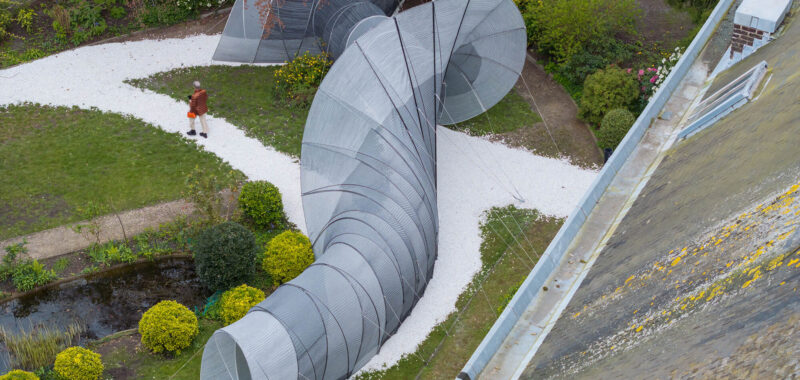Every three years a series of spectacular art installations are sited among the winding, cobble stone streets and medieval church steeples of Bruges, Belgium. For this year’s iteration of the art and architecture festival, Bruges Triennial, SO – IL has designed a public art piece, Common Thread, that delivers a meandering wave-like structure which plays into Bruges’s gothic character and history of lace-making.
Common Thread takes place inside an old monastery courtyard. From the street, the 19th century space is remiss: The 14,000-square-foot courtyard is squared off by a series of buildings, accessible via an innocuous gateway.
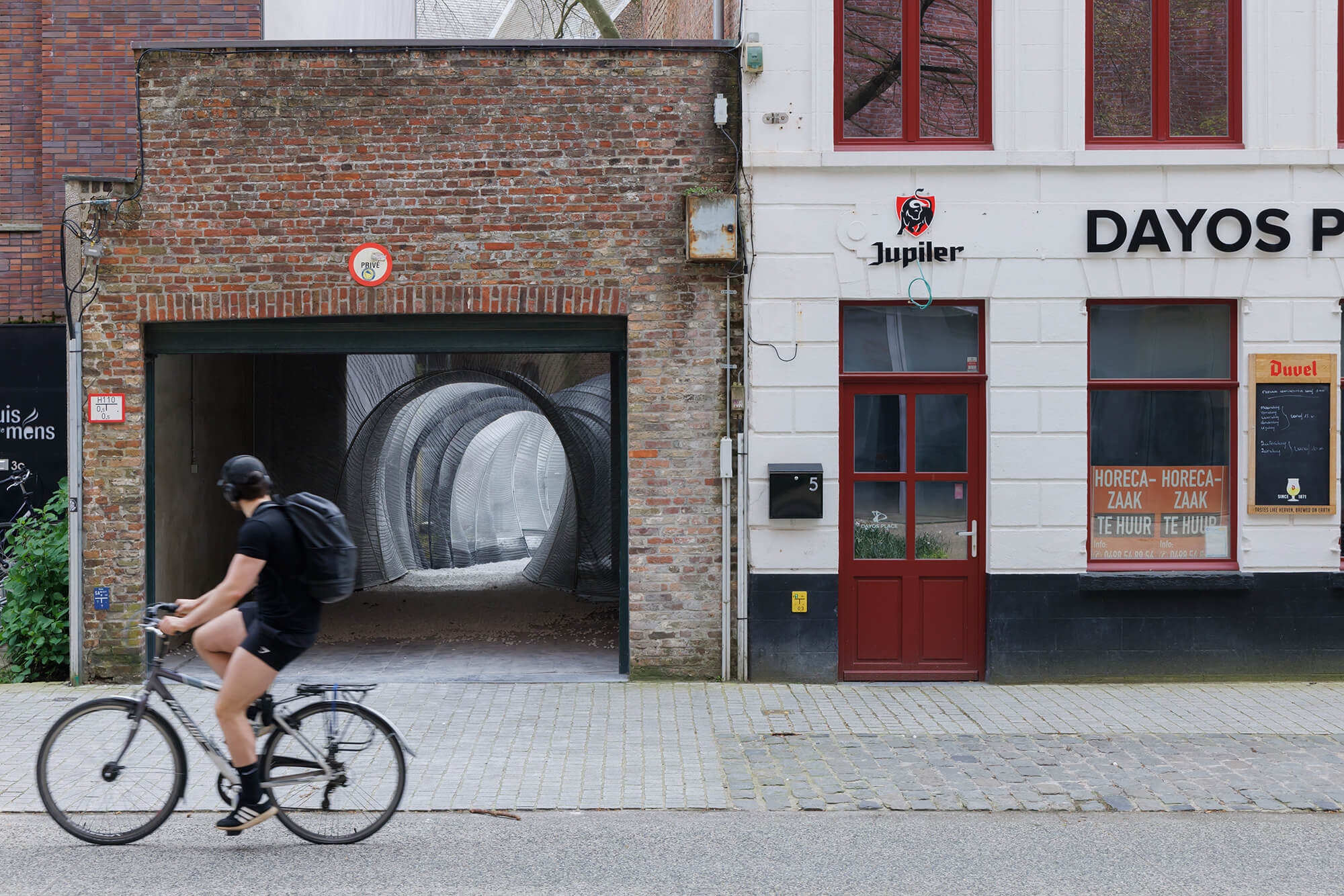
The installation by New York–based SO – IL for the Bruges Triennial begins at an unassuming gateway, where a small vignette was designed to entice pedestrians into the unknown. From there, guests meander through a phantasmagoric series of playfully spiraling tunnels wrapped in charcoal gray mesh. Visitors are then ejected into a sunlit courtyard. The design team called the intervention an “urban conduit between districts.”
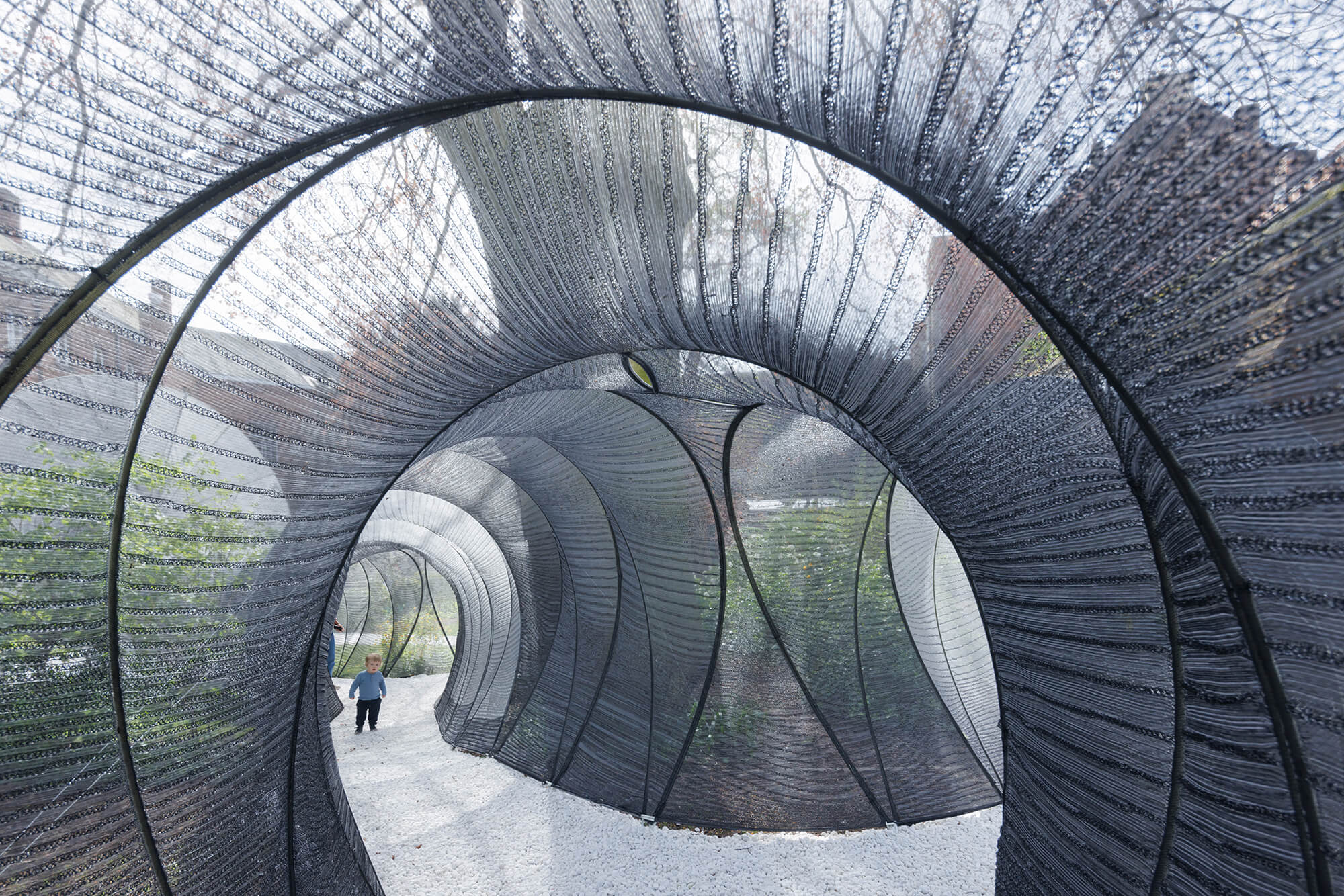
Thus, Common Thread subverts the secluded area into a playground for serendipitous encounters and exploration. There, the architects sought to reveal a space that was previously hidden from public view through an immersive textile installation that’s both formally enticing and historically informed.
Cumulatively, Common Thread employs 180 arches. The mesh material that laces the arches together is the product of a close collaboration between SO – IL’s Jing Liu, Florian Idenburg, and Fabian Pulle; and TU Delft faculty Dr. Mariana Popescu and Anass Kariouh. Diederik Veenendaal, Alessio Vigorito, and Anand Shah were responsible for engineering; and Nick Gereels, Valentin Lorenzen da Silva Jade, Verlinde, Frieder Ringel, and Robin Oval helped with assembly.
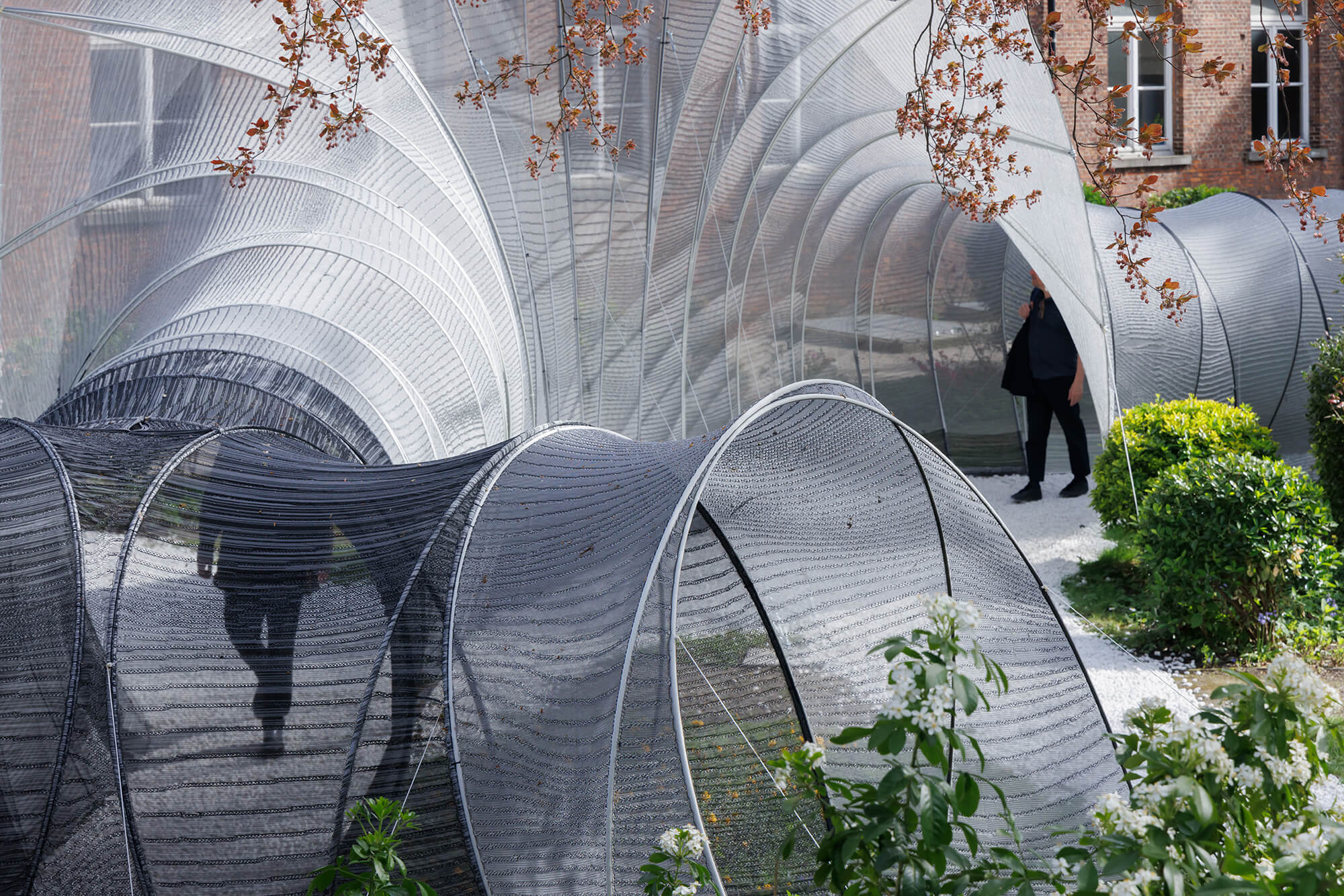
Today, Bruges is well known for a type of textile called bobbin lace which can still be seen in the medieval city’s shops and ancient béguinage. For the Bruges Triennial, SO – IL experimented with the age-old textile using modern technology. According to the architects, the textile design “pays homage to a centuries-old history of lace-making, and the embedded knowledge passed down by the women of Bruges through generations.”
Toward that end, the architects collaborated with Dr. Mariana Popescu and her assistant from TU Delft, Anass Kariouh. The team, aided by a programmable 3D knitting machine, unlocked new geometric possibilities for the material: The design features individual threads that combine and diverge into surprising, ever-changing patterns whose character intentionally recalls Hokusai’s The Great Wave.
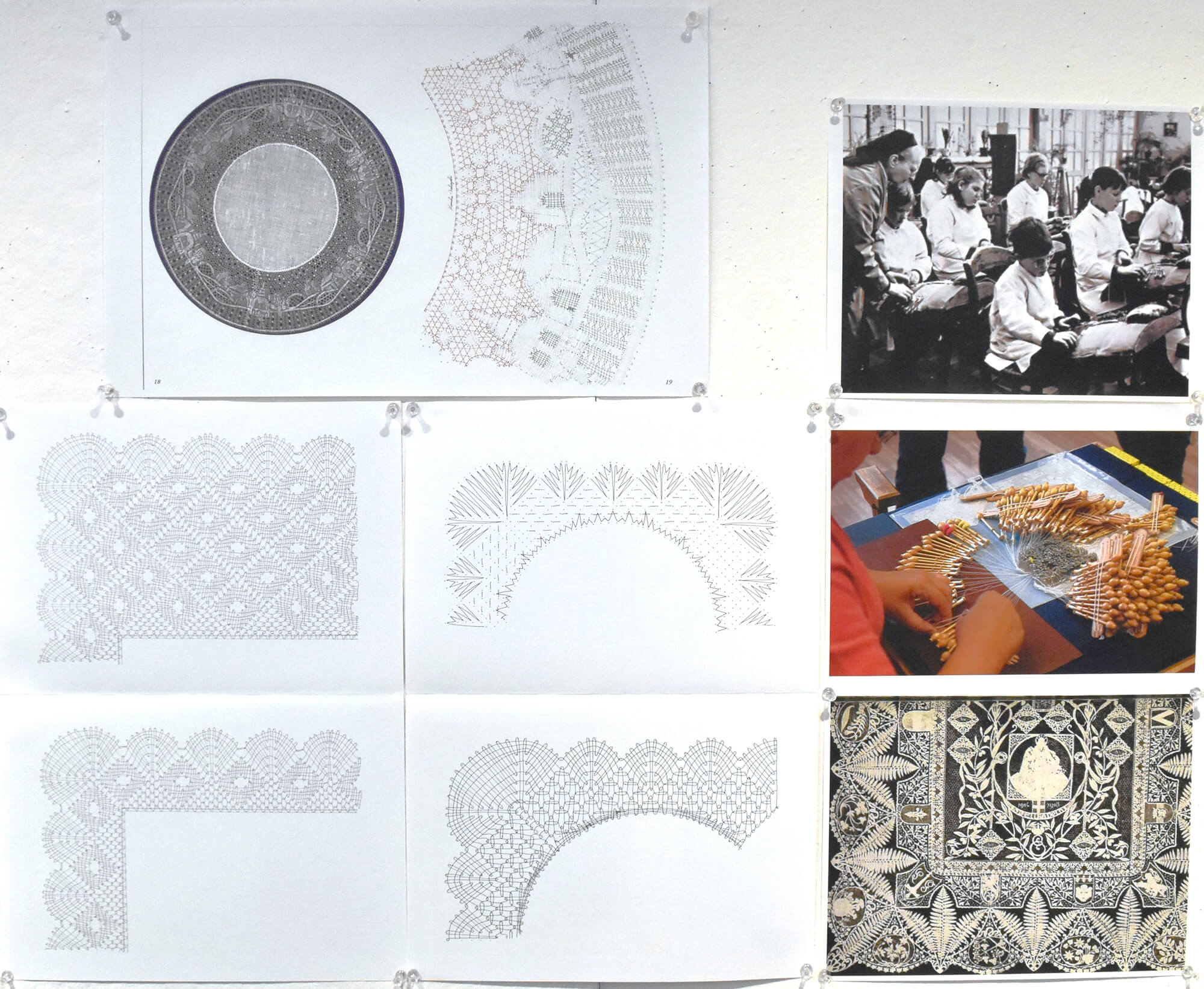
The design team from TU Delft and SO – IL collaborated with Summum Engineering to evaluate computational simulations and material samples, guiding form and structural framework. The end result plays into SO – IL’s existing corpus of work which often explores elastic forms that bend and contort all while using standardized materials.
Common Thread is open in Bruges through September 1. Other installations on view as part of the Bruges Triennial in the small historic city include a boat sculpture by Sumayya Vally that references the area’s trade history and Star of the Sea, a collection of tube-like volumes installed on the beach. In addition to these architectural contributions, a number of museum and cultural institutions have corresponding programming, exhibitions, and talks that run through the length of the Bruges Triennial.

